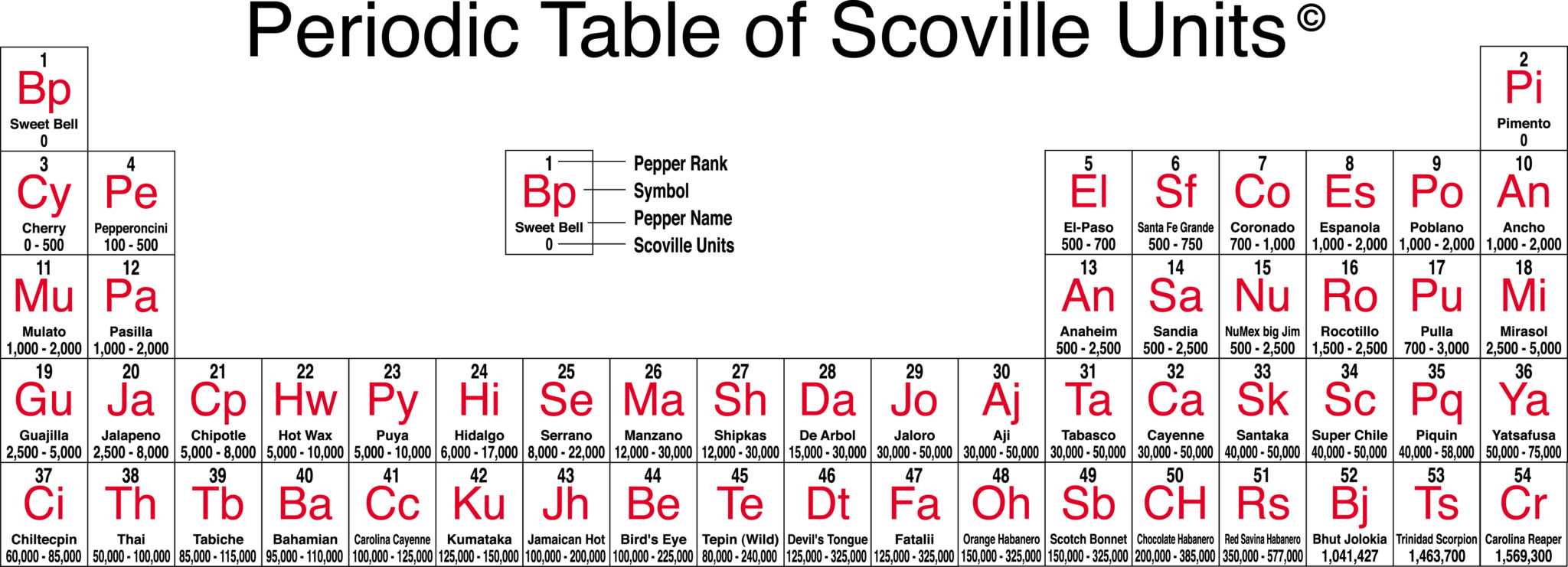The Scoville Scale was developed in 1912 by Wilbur Scoville to measure the pungency of chilli peppers. Originally, the heat rating of pepper extracts was measured by dilution with water. The degree of dilution, until there was no ‘heat’ observed anymore, gives its measure on the Scoville scale in Scoville Units or SHU. The Jalapeno extract has to be diluted up to 8000 times to be not detected anymore (see scale). A drop of extract of the hottest pepper in the world (Bhut Jolokia) more than one million times!
“A meal is generally considered as ‘hot’ with a rating of 500-1000 SHU. Pepper spray used by the police has a rating of 5.300.000 SHU.”
Capsaicin is the active ingredient that gives peppers their pungency. The number of SHU is related to the amount of capsaicin. Today, the pungency is determined by measuring the amount of capsaicin, using chromatography. Pure capsaicin has a rating of 15-16000000 SHU. The chemical is very stable, hardly evaporates and almost doesn’t decompose by cooking.

In chilli peppers five closely related chemical components are present with similar effects. Capsaicin and dihydrocapsaïcine are the most important of them.
When capsaicin is present in the mouth, nerves are giving a similar signal to the brains when burning your mouth eating food above 43 degrees Celsius (109 degrees Fahrenheit). The body responds by releasing endorphin. Endorphin is also called the happiness hormone, gives you a nice feeling and eases the pain. You can get used to capsaicin, and thus to ‘hot’ food as well. Eventually you must eat ‘hotter’ to experience the effects of capsaicin. For many people, hot meals are a pleasant addiction. Birds are not sensitive to capsaicin and are therefore the main dispersers of the seeds.
If you’ve eaten too hot, a glass of milk is a better choice than a glass of water. Capsaicin is insoluble in water and much better in fat. An alcoholic drink will also help extinguishing the ‘fire’ better.